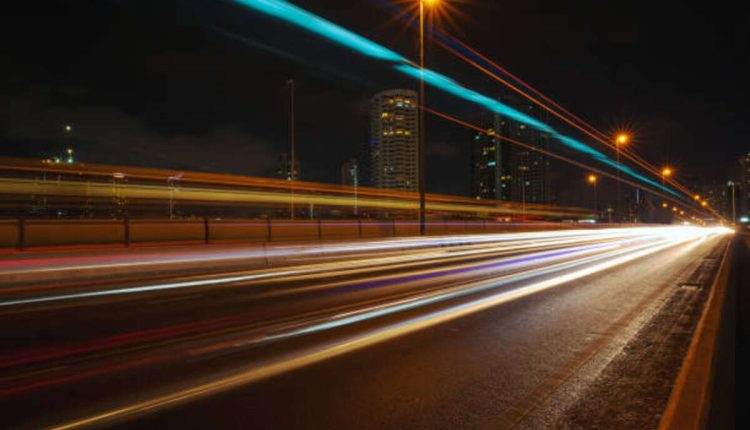When selecting the appropriate race track lights, there are a few considerations you need to keep in mind. Ensure that illumination is uniform so that lux distribution across the area remains consistent. The actual Interesting Info about types of track lighting fixtures.
As an audience could use smartphones to take 4K photos or videos without flicker, flicker-free lighting is also energy efficient and long-term.
LED Lights
As most races occur in the afternoon or evening, lighting is a crucial feature of race track facilities. LED lights offer bright illumination without glare – making them suitable for lighting the whole facility efficiently while using less electricity than traditional race track lighting systems.
Uniform illumination on a racetrack is paramount to its safety, ensuring all spectators can see clearly. For optimal results, illumination uniformity should range from 0.5-0.6. This way, everyone in the stadium will have access to clear viewing of all action within.
CRI, or Color Rendering Index, should also be considered when purchasing racetrack lights. A high CRI makes it easier for spectators to accurately perceive cars at any speed – helping them determine if their driver is speeding too quickly or too slowly.
Brightness
Racing at high speed requires complete concentration from racers, who must quickly respond to any emergencies on the track. Motor speedway lighting must, therefore, provide enough illumination to provide a safe environment for spectators and racers alike – this is why LED lights are such a practical solution when lighting race tracks.
Traditional mercury, sodium, or metal halide bulbs produce harsh, unbalanced light sources; in comparison, LED lights have well-balanced bright and non-glaring lighting – creating an experience more enjoyable for spectators at races.
LEDs also boast flicker-free lighting, making them essential for spectators who use smartphones to capture photos and video of events with clear, easy-viewing images captured through smartphone cameras.
Flicker-Free
An adequate lighting system is integral for spectators and drivers at racing events to ensure their safety. Poor illumination can cause accidents by decreasing visibility, making it hard for racers to navigate turns and obstacles on the track. Furthermore, minimization of light pollution helps preserve wildlife populations and residents.
LED lights are known for their energy efficiency and long lifespan, producing high-quality light free from flickering. Furthermore, they’re weatherproof.
Other types of lighting, such as halogen and metal halide, require higher maintenance due to their frequent bulb replacement and cleaning requirements, which can shorten their lifespan significantly. Solar lighting systems offer more sustainable options while meeting racetrack lighting needs due to their limited light output capabilities.
Durability
Lighting systems prone to wear and tear or with poor durability could require frequent maintenance or replacement costs; choosing one explicitly designed to withstand harsh environments would be ideal.
Tracks must be adequately illuminated so spectators and drivers can view them clearly, especially for night races where accidents could result from poor course visibility. AEON LED lights offer an excellent color rendering index, so they offer clear and vibrant illumination to enhance race fans and drivers ‘ experiences of racing events. Proper lighting systems also prevent glare, distracting drivers from seeing their route.
Energy Efficiency
Lighting at a racetrack must be bright enough for visibility while not becoming distracting or glare-inducing, with long-lasting LED lights ideal for this requirement.
LEDs consume less power to achieve equal brightness levels than other forms of lighting, making them more energy efficient. Furthermore, there is no warm-up period – their full brightness can be reached immediately upon being turned on!
LEDs also have less environmental impact than their halogen or metal halide counterparts, using less electricity and producing less heat; they do not contain any hazardous materials.
Long Lifespan
Race track lights must withstand harsh outdoor elements while providing bright, glare-free illumination throughout races.
Velodrome lighting systems may include halogen bulbs, metal halide bulbs, LEDs (light-emitting diodes), solar lighting, or all combined. Of the available options for powering lighting, LEDs tend to be more efficient and have longer lifespan than traditional options.
The ideal racing track lights provide high luminous efficacy and CRI of 90 or above, which allows spectators to see all the action. Furthermore, their flicker-free quality also helps capture those special moments on camera for social media sharing – increasing enjoyment for spectators and drivers at speedway events.
Light Pollution
Light pollution refers to any artificial lighting that emits excessive, misdirected, or intrusive illumination and comes from sources like building exterior lighting, outdoor area lighting (such as parking lot illumination), streetlights, office lights, and illuminated sports venues. Light pollution has real-life repercussions for city dwellers, such as washed-out starlight for city residents, interference with astronomical observatories, disrupted ecosystems, adverse health effects, and wasteful energy usage and consumption.
People are increasingly appreciating the significance of maintaining dark skies. Cities like Ann Arbor, Michigan, and some states are passing laws to limit lighting–known as dark-sky legislation–while organizations like the International Dark-Sky Association are advocating global efforts to restrict lighting. Citizen scientists are gathering and entering data that can quantify light pollution’s effect and enable experts to predict and suggest solutions before any permanent issues emerge.
Read also: What is 1600 in Time?


